Abstract
Hungry fruit flies can be trained by exposing them to two chemical odorants, one paired with the opportunity to feed on 1 M sucrose. On later testing, when given a choice between odorants the flies migrate specifically toward the sucrose-paired odor. This appetitively reinforced learning by the flies is similar in strength and character to previously demonstrated negatively reinforced learning, but it differs in several properties. Both memory consolidation and memory decay proceed relatively slowly after training with sucrose reward. Consolidation of learned information into anesthesia-resistant long-term memory requires about 100 min after training with sucrose compared to about 30 min after training with electric shock. Memory in wild-type flies persists for 24 hr after training with sucrose compared to 4-6 hr after training with electric shock. Memory in amnesiac mutants appears to be similarly lengthened, from 1 hr to 6 hr, by substituting sucrose reward for shock punishment. Two other mutants, dunce and rutabaga, which were isolated because they failed to learn the shock-avoidance task, learn normally in response to sucrose reward but forget rapidly afterward. One mutant, turnip, does not learn in either paradigm. Reward and punishment can be combined in olfactory discrimination training by pairing one odor to sucrose and the other to electric shock. In this situation, the expression of learning is approximately the sum of that obtained by using either reinforcement alone. After such training, memory decays at two distinct rates, each characteristic of one type of reinforcement.
Keywords: genetics, memory, positive reinforcement
Full text
PDF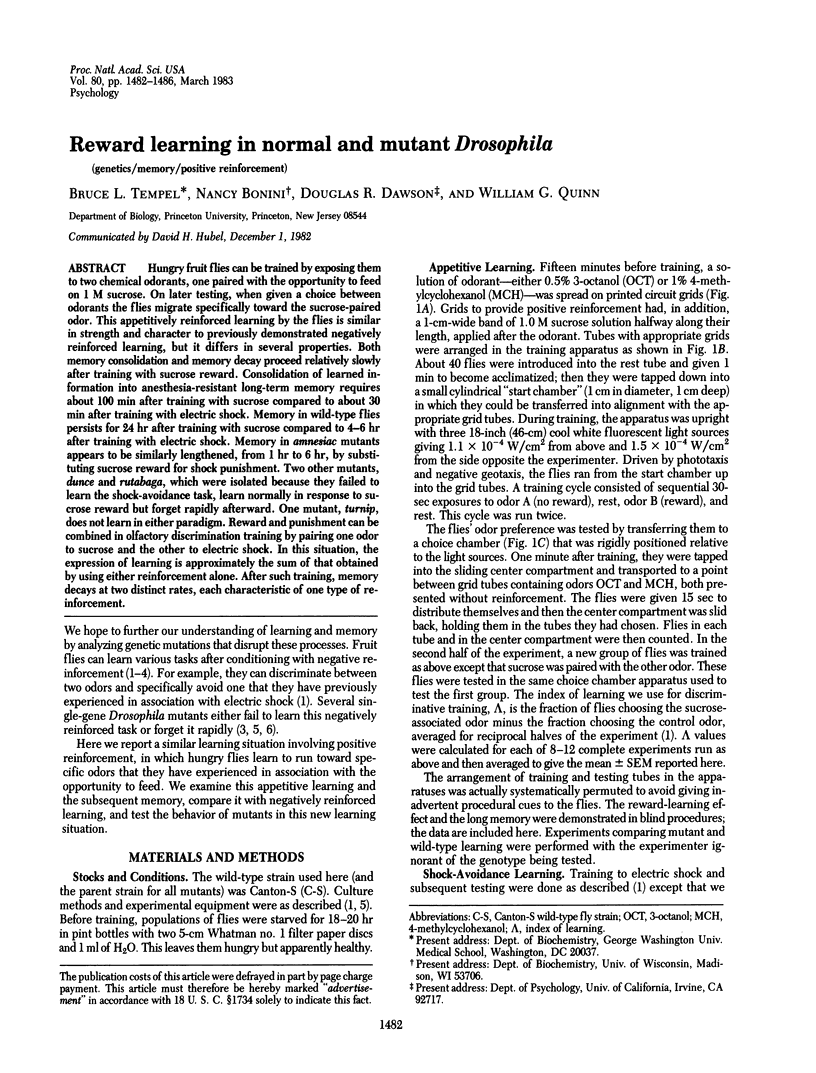
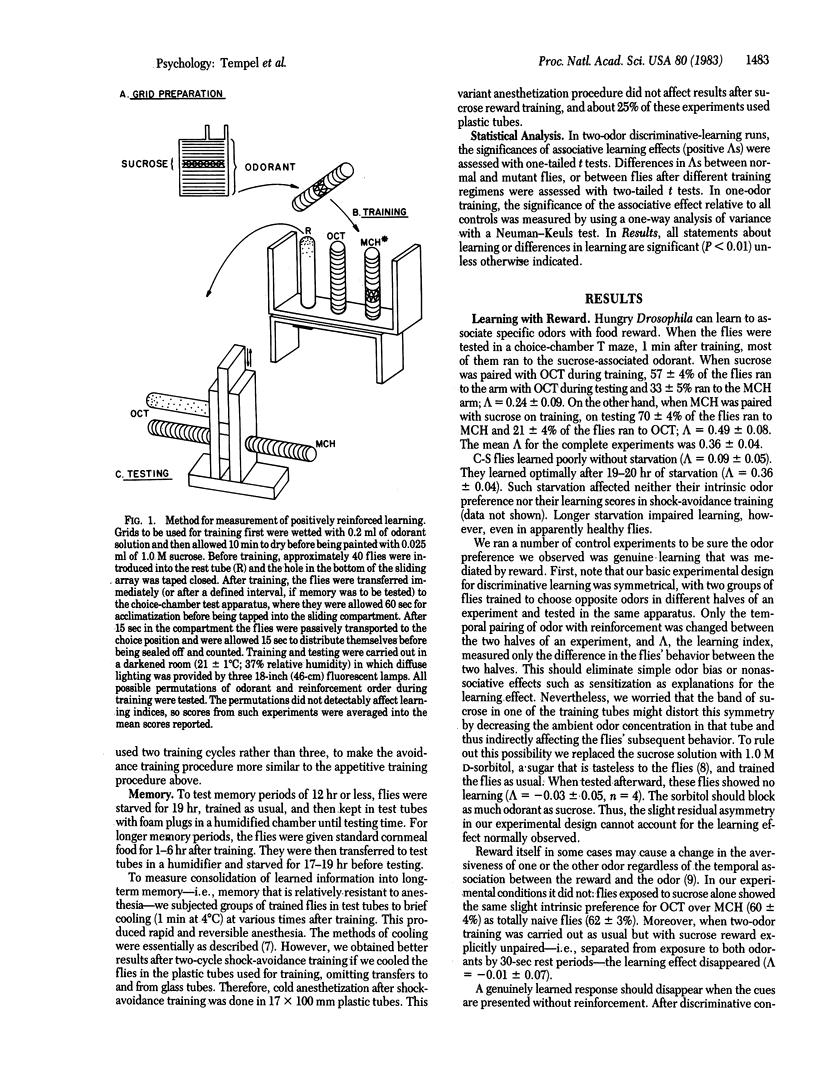
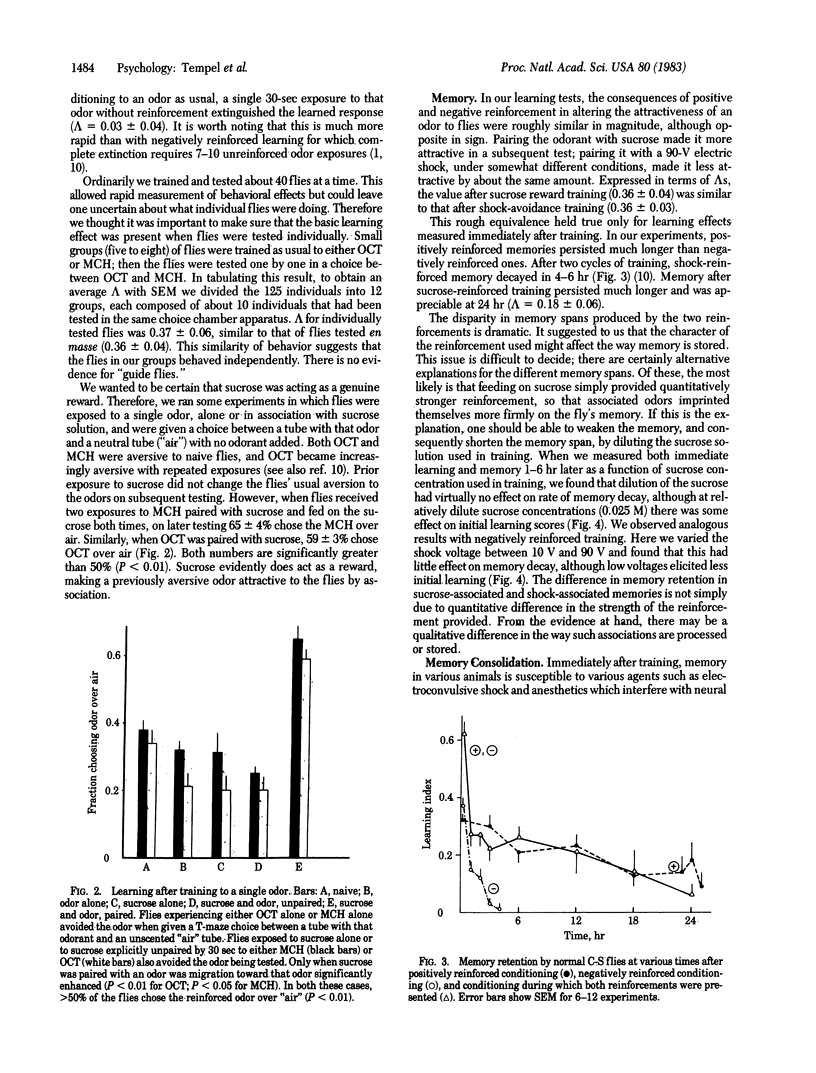
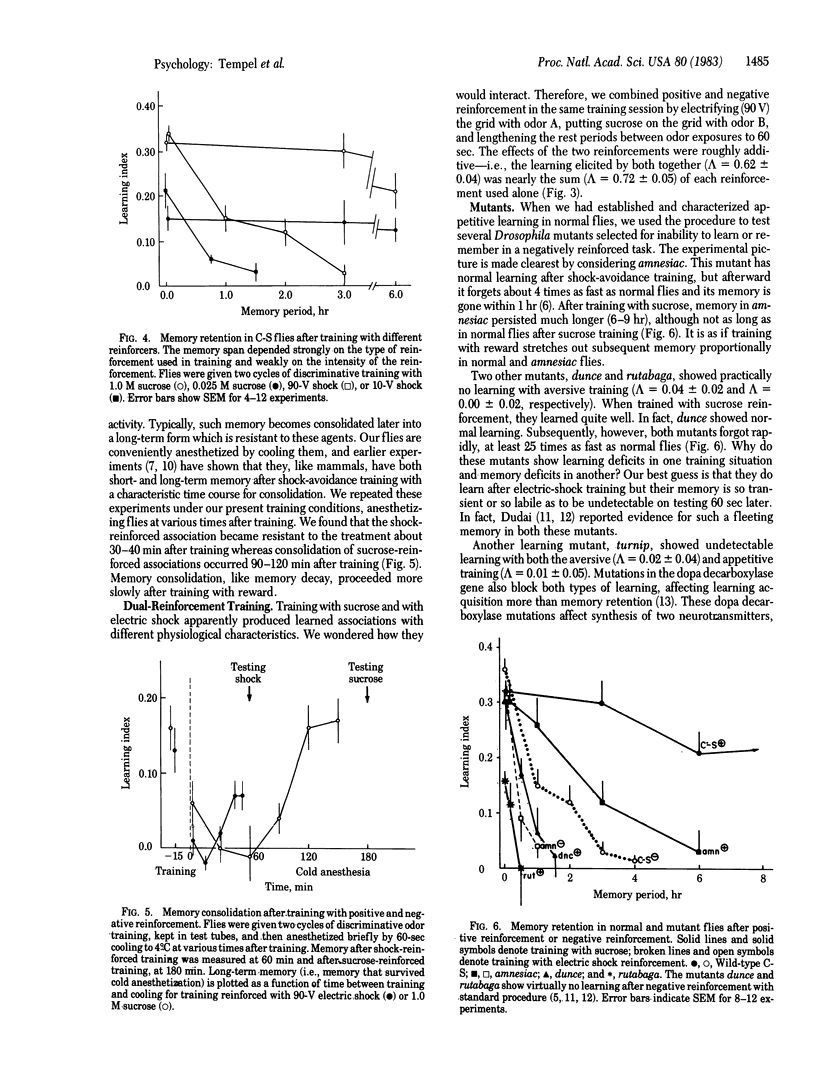
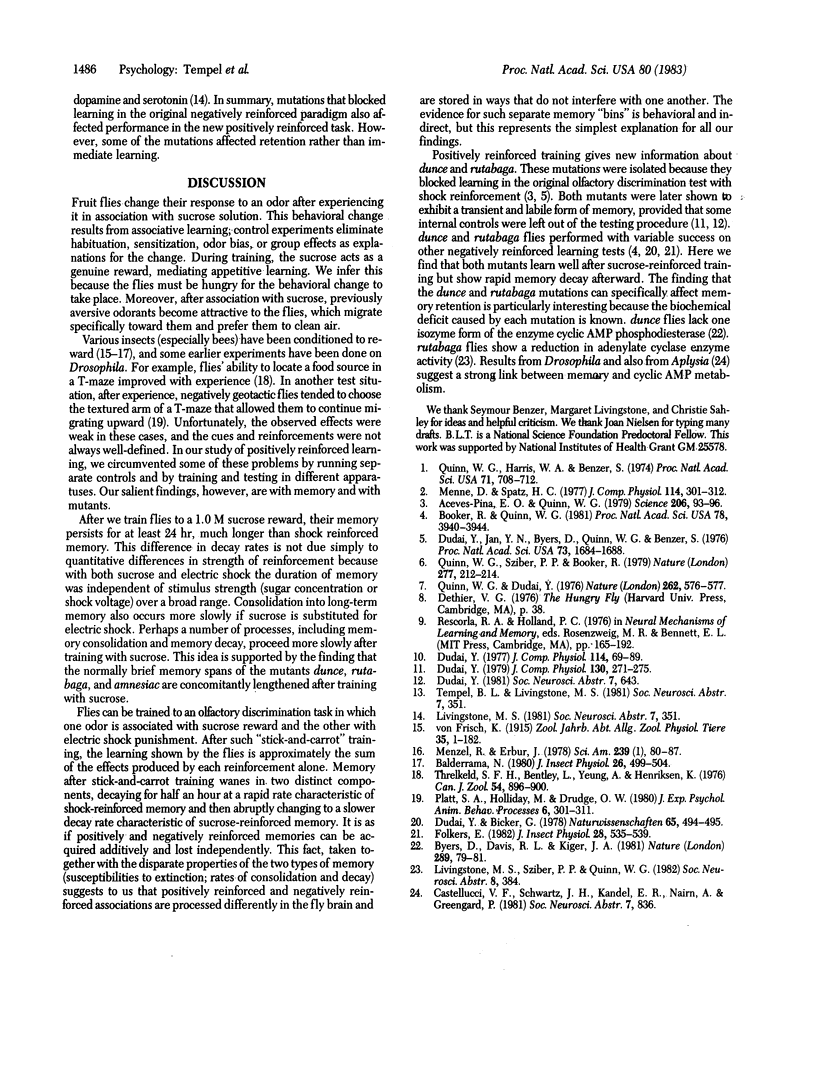
Selected References
These references are in PubMed. This may not be the complete list of references from this article.
- Aceves-Piña E. O., Quinn W. G. Learning in normal and mutant Drosophila larvae. Science. 1979 Oct 5;206(4414):93–96. doi: 10.1126/science.206.4414.93. [DOI] [PubMed] [Google Scholar]
- Booker R., Quinn W. G. Conditioning of leg position in normal and mutant Drosophila. Proc Natl Acad Sci U S A. 1981 Jun;78(6):3940–3944. doi: 10.1073/pnas.78.6.3940. [DOI] [PMC free article] [PubMed] [Google Scholar]
- Byers D., Davis R. L., Kiger J. A., Jr Defect in cyclic AMP phosphodiesterase due to the dunce mutation of learning in Drosophila melanogaster. Nature. 1981 Jan 1;289(5793):79–81. doi: 10.1038/289079a0. [DOI] [PubMed] [Google Scholar]
- Dudai Y., Jan Y. N., Byers D., Quinn W. G., Benzer S. dunce, a mutant of Drosophila deficient in learning. Proc Natl Acad Sci U S A. 1976 May;73(5):1684–1688. doi: 10.1073/pnas.73.5.1684. [DOI] [PMC free article] [PubMed] [Google Scholar]
- Hoffmann K. Effect of castration on photoperiodically induced weight gain in the Djungarian hamster. Naturwissenschaften. 1978 Sep;65(9):494–494. doi: 10.1007/BF00702847. [DOI] [PubMed] [Google Scholar]
- Platt S. A., Holliday M., Drudge O. W. Discrimination learning of an instrumental response in individual Drosophila melanogaster. J Exp Psychol Anim Behav Process. 1980 Oct;6(4):301–311. [PubMed] [Google Scholar]
- Quinn W. G., Dudai Y. Memory phases in Drosophila. Nature. 1976 Aug 12;262(5569):576–577. doi: 10.1038/262576a0. [DOI] [PubMed] [Google Scholar]
- Quinn W. G., Harris W. A., Benzer S. Conditioned behavior in Drosophila melanogaster. Proc Natl Acad Sci U S A. 1974 Mar;71(3):708–712. doi: 10.1073/pnas.71.3.708. [DOI] [PMC free article] [PubMed] [Google Scholar]
- Quinn W. G., Sziber P. P., Booker R. The Drosophila memory mutant amnesiac. Nature. 1979 Jan 18;277(5693):212–214. doi: 10.1038/277212a0. [DOI] [PubMed] [Google Scholar]
- The case of the CT scanner. Sci Am. 1978 Nov;239(5):80–80. [PubMed] [Google Scholar]


